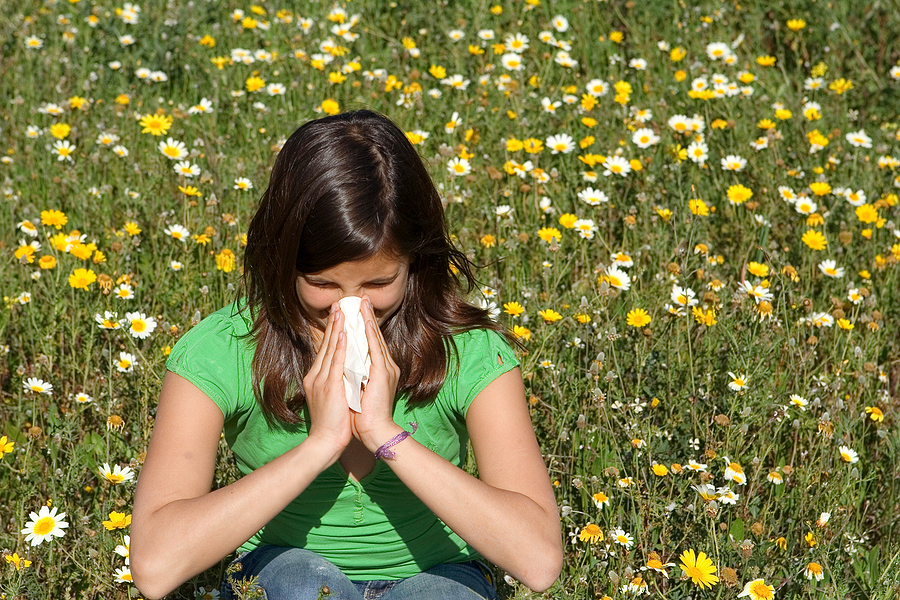
A nagging tickle in your throat has you coughing nonstop for hours and keeps you up all night. No matter how much you cough, you can’t seem to clear your throat. You’ve coughed so much your throat stings. Coughs may … Continue reading
READ MORE
You’re sneezing and can’t stop. Your eyes itch and are so watery that you look like you’ve been crying for hours. Your nose keeps running, causing postnasal drip in the back of your throat or skin irritation from excessive use of facial tissues. You’re also tired and miserable because you have things to do and little energy.
We know what it’s like. You just want to curl up and make the congestion, sneezing, and itching stop. To do so, you first need to determine what you’re experiencing.
Seasonal allergies, aka hay fever, and perennial allergic rhinitis share some symptoms, but they’re not the same. Knowing what you’re dealing with is important when it comes to managing the symptoms you experience and finding lasting relief.
Hay fever or seasonal allergies are an immune response to an allergen like tree or grass pollen, weeds, or mold spores. These allergies begin when you breathe in the pollen or spores. Your immune system gets to work attacking the intruder, but that response is excessive, leading to inflammation that causes sinus issues and itchy, watery eyes.
With seasonal allergies, the symptoms worsen with the seasonal pollen that impacts you.
In the U.S., around 50 million people suffer from seasonal allergies. They’re no fun and leave you feeling drained. If they’re severe, you may find it hard to function at work, school, or home.
Perennial allergic rhinitis is an inflammatory condition like seasonal allergies, but it doesn’t come and go as seasons change. It occurs throughout the year with symptoms lasting an hour or more each day. In this case, the allergens include things that are always present, like dust mites. It’s hard to eliminate all dust mites from your home.
The number of Americans dealing with perennial allergic rhinitis is harder to narrow down. One European study found that around 23% of patients had the allergic condition, but many people are not properly diagnosed by their doctor. If they do have the condition, it could be about 45% of people.
Both are types of allergies, which means the symptoms are similar.
Seasonal Allergies:
Perennial Allergic Rhinitis:
While the symptoms are very similar, remember that seasonal allergies come and go. Perennial allergic rhinitis typically lasts all year. Both can lead to sinusitis, which is a sinus infection that causes:
Because dust mites are one of the top allergens that cause perennial allergic rhinitis, you must work on reducing their numbers. Do this by:
If you have pet allergies, removing all animals from your home is the best way. However, people like the companionship that pets provide. Limit their access and keep them out of your bedroom.
Seasonal allergies are a little easier to manage as you just need to get through the season, but that doesn’t make it easy when you’re not feeling great. Try:
People also take allergy medications to ease their symptoms. Antihistamines work by lessening the histamine response your body gives off when you breathe in the allergen that affects you. There are things to keep in mind about the daily use of antihistamines.
Depending on the antihistamine (first- or second-generation), they can cause:
In addition, some people with chronic health conditions shouldn’t take antihistamines without first talking to their doctor. This includes people with diabetes, glaucoma, heart disease, and high blood pressure.
If your worst symptoms are itchy, watery eyes. Allergy eye drops help manage symptoms. Facial pain and pressure are relieved with the help of over-the-counter medications like ibuprofen.
Even with these common treatment options for allergies, it’s better to work with an allergy specialist. You don’t want to take medications every day for years. While allergy medications are safe, studies have shown that long-term use of high doses of diphenhydramine may increase your risk of dementia. This is why it’s important to schedule an appointment with an allergist.
Instead of relying on expensive, over-the-counter medications every day, all year, talk to Premium Allergy and Respiratory Center. Our board-certified allergy specialist offers today’s most effective treatments that ease your symptoms for good.
Immunotherapy is a promising option than taking a lifetime of allergy medications. Once your allergen is known, you start taking micro doses via an injection, oral drops, or sublingual tablets. Your body slowly develops a healthy immune response to the triggering pollens, spores, dust mites, or pet dander.
Allergy shots, sublingual drops, and tablets do take time to work. You need to work with an allergist and commit to months or years of treatments. It’s worth it for the lasting relief you experience.
Schedule an appointment with an allergist for comprehensive testing that determines your allergens. Once you know the exact triggers that make you miserable, you can work on effective allergy treatments with Dr. Sabry.